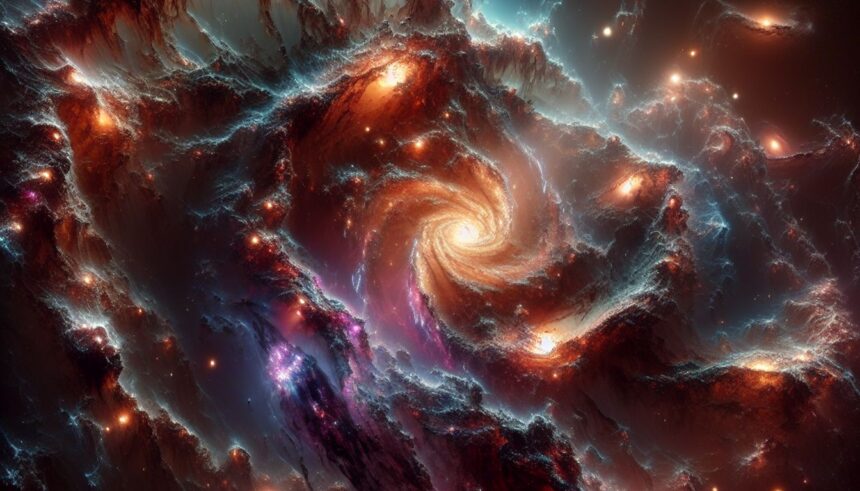The quest to unravel the mysteries of the dark universe has taken a significant leap forward with the advent of 3D maps that showcase cosmic structures in unprecedented detail. These maps provide a fascinating glimpse into the sprawling galactic haloes and intricate networks of tidal streams and stellar shells, offering clues to the cosmos that were previously hidden from view.
Understanding the Dark Universe through 3D Mapping
Scientists utilize advanced 3D maps to visualize the scale and structure of the dark universe, revealing cosmic features that are otherwise invisible. These maps are not just representations; they are tools for discovery, enabling researchers to examine the distribution of dark matter and how it influences the formation and evolution of galaxies.
The Role of Galactic Haloes
Within the realm of cosmic structures, galactic haloes are particularly intriguing. These vast regions of space, primarily composed of dark matter, envelop galaxies and play a crucial role in their lifecycle. Through 3D mapping, scientists can observe these haloes, analyze their properties, and understand their impact on galaxy formation and dynamics.
Stellar Shells and Tidal Streams: Witnesses to Galactic History
Further enriching the cosmic narrative revealed by 3D maps are the stellar shells and tidal streams. These structures are remnants of smaller galaxies that have merged with larger ones, their stars stretched and scattered during the process. By studying these features, astronomers can piece together the historical puzzle of galaxy interaction and growth over billions of years.
Navigating the Complexities of 3D Data
Creating and interpreting 3D maps of the universe is no small feat. It requires sophisticated technology and a deep understanding of astrophysics. These maps are constructed using data collected from various telescopes and observatories, meticulously processed to build a coherent model that spans vast distances across space.
The Scientific and Educational Impact of 3D Cosmic Maps
The insights gained from 3D cosmic mapping are valuable not just for scientists but also for educational purposes. They provide a concrete way for the public and students to visualize complex astronomical concepts, such as dark energy and the fabric of the cosmos. These maps ignite curiosity and foster a deeper appreciation of our universe’s vastness and mystery.
Future Prospects in Cosmic Exploration
Looking ahead, the field of cosmic mapping is poised for more breakthroughs. Innovations in telescope technology and data analysis will likely unveil more about the dark universe. With each map and model, we move closer to answering some of the most profound questions about the nature and fate of the universe.
Disclaimer: The information in this article is based on current research and is subject to change. Readers are advised to verify details and consult experts before drawing conclusions.







